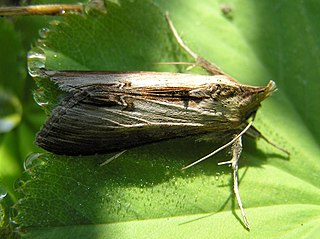
Cucullia asteris, or star-wort, is a moth of the family Noctuidae. The species was first described by Michael Denis and Ignaz Schiffermüller in 1775. It is found through the Palearctic including Japan.
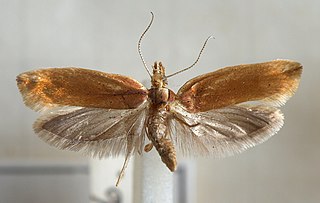
Ypsolopha ustella, the variable ypsolopha moth, is a moth of the family Ypsolophidae. It is found in most of Europe and is also present in North America.

Cydia fagiglandana, the beech moth, is a moth of the family Tortricidae.

Lyonetia clerkella, the apple leaf miner, is a moth in the family Lyonetiidae. It is found all over Europe, north-western Siberia, the Far East, northern Africa, the Middle East, Turkey, India and Japan.

The silky wainscot is a moth of the family Noctuidae. It is found in most of Europe including Russia.

Nycteola revayana, the oak nycteoline, is a moth of the family Nolidae. The species was first described by Giovanni Antonio Scopoli in 1772. It is found from Europe and east across the Palearctic to Japan and India.
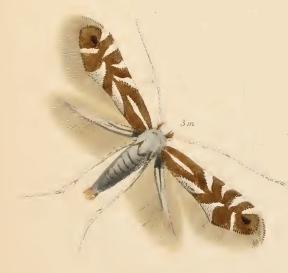
Phyllonorycter rajella is a moth of the family Gracillariidae. It is known from all of Europe, except the Iberian Peninsula and Greece.

Cosmopterix clandestinella is a moth of the family Cosmopterigidae. It is known from the United States.

Cosmopterix galapagosensis is a moth of the family Cosmopterigidae. It is known from the Galapagos Islands.
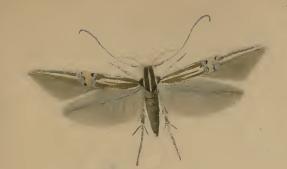
Cosmopterix lienigiella is a moth of the family Cosmopterigidae. It is found from Fennoscandia to Spain, the Alps and Greece and from Ireland to Ukraine. It is also present in eastern Russia and Japan. It is the type species of the genus Cosmopterix.
Ptocheuusa paupella, the light fleabane neb, is a moth of the family Gelechiidae. It is found from central and southern Europe to the Ural Mountains. It is also found in Turkey and India.

Scrobipalpa samadensis, the buck's-horn groundling, is a moth of the family Gelechiidae. It is found in most of Europe and Russia.
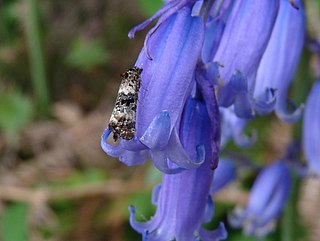
Hysterophora maculosana, the bluebell conch, is a species of moth of the family Tortricidae. It is found from most of Europe, east to the Crimea, Asia Minor and the Palestinian territories. The habitat consists of woodland areas.
Filatima biminimaculella is a moth of the family Gelechiidae. It is found in North America, where it has been recorded from Alabama, Arkansas, Georgia, Louisiana, Maryland, Mississippi, Missouri, Oklahoma, South Carolina, Tennessee and Texas.
Filatima glycyrhizaeella is a moth of the family Gelechiidae. It is found in North America, where it has been recorded from Washington, Arizona and Colorado.
Filatima natalis is a moth of the family Gelechiidae. It is found in North America, where it has been recorded from Arizona, Colorado and Oregon.
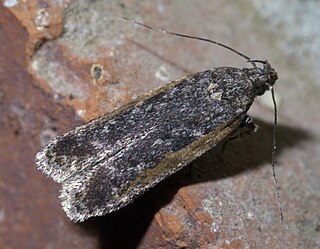
Filatima serotinella is a moth of the family Gelechiidae. It is found in North America, where it has been recorded from Alabama, Alberta, Arkansas, Colorado, Illinois, Indiana, Kansas, Kentucky, Louisiana, Maine, Maryland, Mississippi, South Carolina, Tennessee, Texas and West Virginia.
Pseudochelaria walsinghami is a moth of the family Gelechiidae. It was described by Dietz in 1900. It is found in North America, where it has been recorded from Alabama, Arizona, Arkansas, Florida, Illinois, Indiana, Kansas, Kentucky, Maine, Mississippi, Nebraska, North Carolina, Ohio, Pennsylvania, South Carolina and Tennessee.
Monochroa robusta is a moth of the family Gelechiidae. It was described by Annette Frances Braun in 1921. It is found in North America, where it has been recorded from Ohio and South Carolina.
Psittacastis stigmaphylli is a moth in the family Depressariidae. It was described by Lord Walsingham in 1912. It is found on Jamaica.










